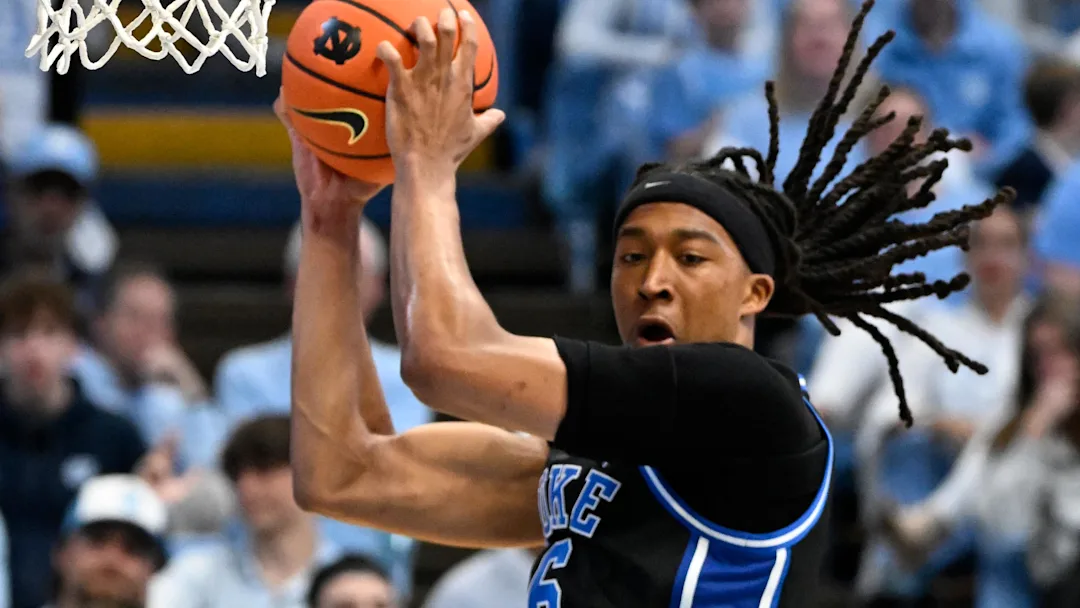As Jon Scheyer embarks on his fourth season as the head coach of the Duke Blue Devils men’s basketball team, expectations are sky-high. The transition from a legendary playing career and a successful stint as an assistant coach to leading one of college basketball’s most storied programs has been closely watched. Now, with another year of experience under his belt, Scheyer’s squad is shaping up with a mix of seasoned veterans, promising underclassmen, and intriguing newcomers. The roster for the 2025-2026 season reflects a blend of continuity, talent infusion, and strategic positioning, aimed at reclaiming Duke’s place atop the college basketball hierarchy.
The core of this season’s roster is built around several key returning players who have already demonstrated their capability on the national stage. These athletes have grown under Scheyer’s system, embracing his coaching philosophy which emphasizes versatility, defensive tenacity, and a fast-paced offensive style. Leading the charge is Cooper Flagg, the 5-star forward who has been the face of Duke’s resurgence. Known for his dynamic scoring ability, athleticism, and high basketball IQ, Flagg is poised to further elevate his game. His presence on both ends of the floor provides Duke with a matchup nightmare, as he can guard multiple positions and create offense in a variety of ways, whether through driving to the basket, mid-range shooting, or facilitating teammates.
Alongside Flagg is the talented backcourt duo of Trevin Lacey and Jalen Smith. Lacey, a sharp-shooting guard, is known for his ability to stretch defenses with his deep range and quick decision-making. His steady hand in clutch situations and improved playmaking skills add a critical dimension to Duke’s offense. Smith, on the other hand, blends size and agility in the guard position, capable of both initiating the offense and defending perimeter threats. His improved conditioning and maturity since last season make him an invaluable asset in Scheyer’s system, often tasked with guarding the opponent’s best perimeter scorer.
The frontcourt features the towering presence of Olivier Rioux, a 7-foot-6 Canadian center who transferred from Florida. Rioux brings rare size and length to Duke’s interior defense, giving the Blue Devils a formidable rim protector. His ability to alter shots and control rebounds is expected to anchor Duke’s defensive efforts in the paint. While his offensive game is still developing, his size alone commands attention from opposing offenses, allowing Duke’s guards and forwards to play more aggressively on the perimeter. The coaching staff has invested heavily in Rioux’s conditioning and post moves, aiming to turn him into a dominant two-way force.
Adding to the frontcourt depth is the versatile Kon Knueppel, who chose to return to Duke instead of pursuing professional opportunities overseas. Knueppel, a crafty forward, is known for his high basketball IQ, rebounding, and ability to stretch the floor with his shooting. His decision to return for another season has been a huge boost for Scheyer, providing experience and leadership to a relatively young frontcourt. Knueppel’s polished skill set and consistent work ethic make him an ideal complement to the more athletic players, often stepping up in critical moments to provide stability.
Among the newcomers, Duke’s recruiting class continues to impress. The addition of a highly touted 5-star point guard from the East Coast brings fresh energy and ball-handling prowess. This freshman, widely regarded as one of the best playmakers in the country, offers Scheyer another ball-dominant guard to orchestrate the offense, reduce pressure on the backcourt, and improve the team’s overall tempo. His explosiveness and court vision fit perfectly with the team’s desire to push the pace and create open looks for shooters like Lacey and Knueppel. Early reports from practices indicate that this freshman has adapted quickly to Duke’s system, showing maturity beyond his years.
Complementing the guard position is a promising sophomore wing player who has spent the last season developing his shooting and defensive capabilities. Though he saw limited minutes as a freshman, this player is expected to take a leap forward, offering reliable scoring off the bench and the ability to guard multiple positions. Scheyer’s staff is excited about his progress, noting that his dedication in the offseason has paid dividends in his understanding of the game and physical conditioning. His versatility will provide Duke with valuable flexibility in lineups, especially in high-pressure situations.
Depth remains a hallmark of Duke’s roster construction, with several role players returning who excel in specific areas such as hustle, defense, and three-point shooting. These players may not fill the box score with flashy stats but provide critical intangibles that contribute to team chemistry and success. Scheyer has emphasized the importance of these role players in maintaining balance and allowing the starters to perform at their peak without fatigue. Their continued presence and improvement are expected to play a big role in Duke’s consistency throughout the grind of the ACC schedule.
The coaching staff’s ability to develop talent has been a key factor in Duke’s rebuilding efforts. Scheyer, drawing on his experience as a player under Mike Krzyzewski, understands the importance of maximizing each player’s potential. His philosophy blends the rich tradition of Duke basketball with modern strategies focusing on analytics, pace, and space. This approach has led to a roster that not only features marquee names but also well-rounded contributors who can adapt to various styles of play. Scheyer’s communication skills and emphasis on accountability have earned him the respect of his players, fostering a culture where everyone understands their role and strives to improve.
The team’s style of play is expected to remain fast and aggressive. Offensively, Duke relies on quick ball movement, spacing the floor with shooters, and capitalizing on transition opportunities. Defensively, the Blue Devils aim to apply pressure on the perimeter while protecting the paint with their length. This balance allows them to be competitive against a wide range of opponents, from physical, inside-focused teams to those who rely heavily on outside shooting. Scheyer’s fourth year at the helm should see the players fully comfortable in this system, translating into greater on-court cohesion and execution.
The ACC competition remains fierce, with traditional powerhouses like North Carolina, Virginia, and Louisville also boasting strong rosters. To rise above this tough conference, Duke’s roster must combine individual talent with teamwork and mental toughness. The blend of experienced upperclassmen and high-upside newcomers creates a promising dynamic, with veterans guiding the young players through the rigors of a long season. This mentoring process is critical as it prepares the team not only for regular season success but for the intensity of March Madness, where Duke expects to make a deep tournament run.
Duke’s commitment to academics and character development continues alongside athletic ambitions. Scheyer and his staff maintain that the players’ growth off the court is equally important as their success on it. The roster features players who are leaders in the locker room and active in community service, embodying the university’s values. This holistic approach has helped create a strong team identity, one that is grounded in discipline, respect, and resilience—qualities that often translate into winning basketball.
Looking ahead, the future of Duke basketball appears bright. The current roster, with its mix of established stars and emerging talent, lays a solid foundation for sustained success. Recruiting pipelines remain strong, and Scheyer’s vision for the program continues to attract top-tier athletes eager to join the Blue Devils’ legacy. The pressure to perform is immense, given Duke’s history and fan expectations, but this team has the tools and leadership necessary to meet those challenges head-on.
In conclusion, Jon Scheyer’s fourth Duke basketball roster reflects a carefully constructed balance of experience, skill, and potential. Returning players like Cooper Flagg, Trevin Lacey, and Olivier Rioux provide a strong core, while newcomers and role players add depth and versatility. The coaching staff’s emphasis on development and culture is evident throughout the squad, promising a competitive season filled with growth and excitement. As the Blue Devils take to the court this year, they carry the hopes of a proud tradition and the ambition to reclaim their spot among college basketball’s elite.



